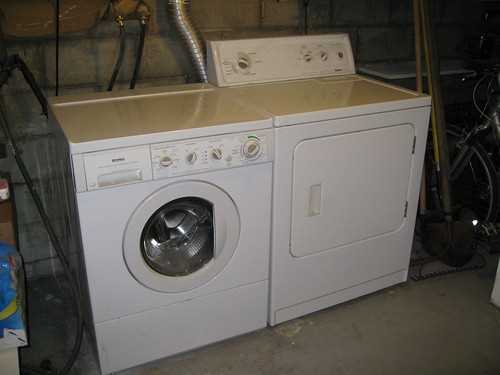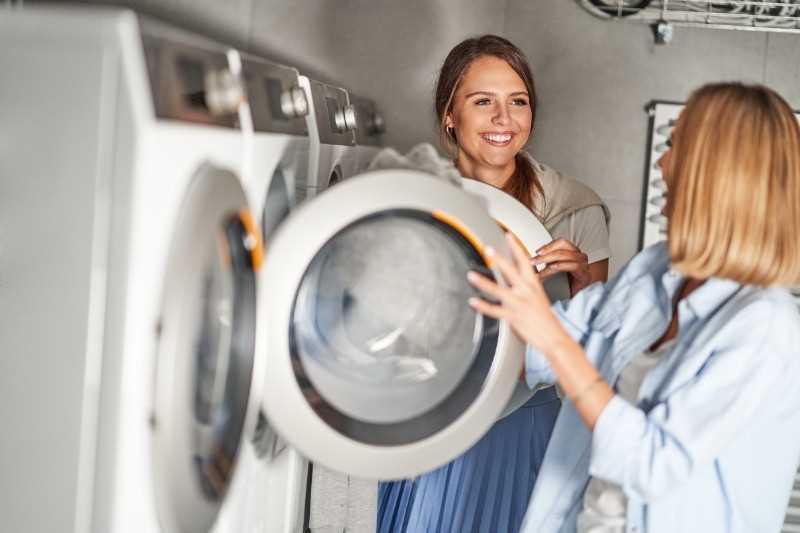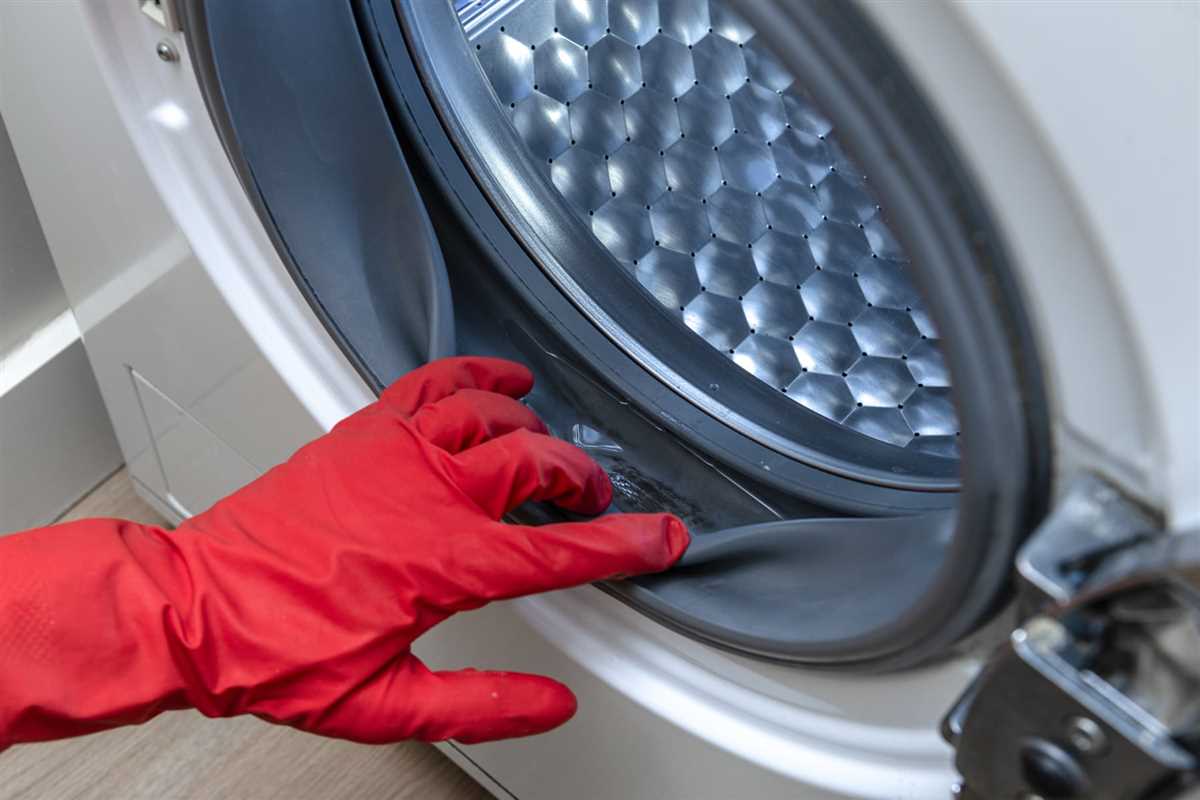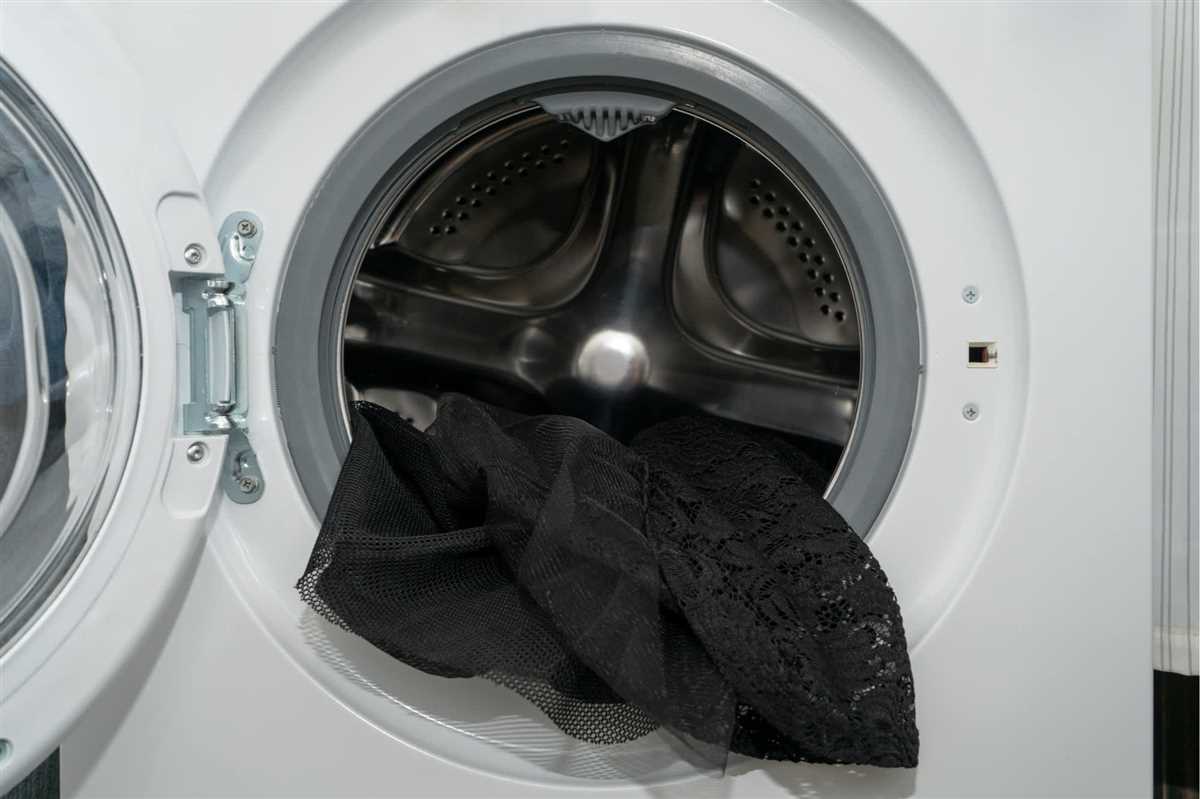




Living in an apartment without a washing machine can be challenging, especially when it comes to keeping your clothes clean and fresh. However, with the right tips and techniques, you can still maintain a clean wardrobe and ensure your clothes always look their best. In this article, we will explore expert advice on how to survive without a washing machine in your apartment.
First and foremost, it’s important to prioritize your laundry routine. Set aside specific days and times dedicated to doing laundry, just like you would if you had a washing machine. This will help you stay organized and ensure you always have clean clothes when you need them.
One essential tip is to hand wash your clothes. Although it may seem old-fashioned, hand washing can be an effective method for keeping your clothes clean. Use gentle detergent and follow the instructions carefully. This method may take a bit more time and effort, but it will ensure your clothes are thoroughly cleaned.
Another option to consider is using a laundromat or a nearby laundry service. While this may require extra time and money, it can be a convenient solution if you have a busy schedule or limited space in your apartment. Many laundromats offer self-service machines, which can save you time and energy.
In conclusion, even without a washing machine in your apartment, there are several ways to survive and maintain a clean wardrobe. By implementing these expert tips, you can ensure your clothes always look their best and maintain your personal style.
Expert Tips for Surviving without a Washing Machine in Your Apartment

1. Hand washing
If you find yourself without a washing machine, one of the most basic and effective alternatives is hand washing your clothes. Fill a sink or basin with warm water and add a gentle detergent. Gently agitate the clothes with your hands, paying extra attention to stained or soiled areas. After washing, rinse thoroughly and wring out the excess water.
2. Use a portable washing device
Investing in a portable washing device can make laundry tasks easier when you don’t have access to a washing machine. These devices are designed to mimic the action of a washing machine and can be manually operated. Simply add water, detergent, and clothes, and then turn the device to wash your laundry. Some portable devices also have a spin feature to help remove excess water.
3. Utilize a laundromat or communal laundry facilities
If your apartment building or neighborhood has a laundromat or communal laundry facilities, take advantage of them. Plan your laundry schedule and make regular trips to the laundromat to keep up with your laundry needs. This option may require some extra time and effort, but it can save you from the hassle of hand washing or investing in a portable device.
4. Consider outsourcing
If hand washing or visiting a laundromat is not feasible for you, consider outsourcing your laundry to a professional laundry service. Many places offer wash-and-fold services where you drop off your dirty clothes and pick them up clean and neatly folded. While this option may come with a cost, it can save you time and effort in the long run.
5. Extend the time between washes

To minimize the need for frequent hand washing or visiting a laundromat, try extending the time between washes. Use clothing items that are less prone to stains or odors, such as synthetic materials or dark-colored clothes. Additionally, spot clean any stains or spills to keep your clothes fresh for longer.
6. Make use of drying racks or clotheslines
After hand washing or using a portable device, efficiently dry your clothes using drying racks or clotheslines. Hang your clothes in a well-ventilated area or outside if possible. This method may take longer than using a dryer, but it is a suitable alternative when you don’t have access to one.
7. Use stain removers
To tackle tough stains without a washing machine, invest in stain removers or pre-treat the areas before handwashing. Follow the instructions on the stain remover packaging or research homemade remedies using common household items like vinegar or baking soda.
- Hand washing is an effective alternative when you don’t have a washing machine. Use warm water and a gentle detergent.
- Consider investing in a portable washing device to make laundry tasks easier.
- If available, make use of laundromats or communal laundry facilities.
- Outsource your laundry to a professional laundry service if hand washing is not feasible.
- Extend the time between washes by using clothing items less prone to stains or odors.
- Utilize drying racks or clotheslines to dry your clothes.
- Use stain removers or pre-treat stains before handwashing.
Efficient Hand Washing Techniques
When you don’t have access to a washing machine, hand washing your clothes is an essential skill to have. Here are some efficient hand washing techniques to help you keep your clothes clean and fresh:
1. Sort your clothes
Before you start washing your clothes by hand, it’s essential to sort them by color and fabric type. Separate your clothes into different piles based on light and dark colors, and delicate and sturdy fabrics.
2. Pre-treat stains
If you have any visible stains on your clothes, pre-treating them before washing can help to remove them more effectively. Use a stain remover or a mixture of detergent and water to treat the stains. Gently rub the solution into the fabric and let it sit for a few minutes before rinsing.
3. Use a suitable detergent
Choose a mild detergent that is suitable for hand washing. Avoid using bleach or harsh chemicals, as they can damage the fabric. Read the instructions on the detergent packaging for the recommended amount to use.
4. Fill a basin or sink with water

Fill a basin or sink with lukewarm water. Add the appropriate amount of detergent and mix well to create a soapy solution.
5. Wash your clothes
Place your clothes in the soapy water and gently agitate them with your hands. Pay extra attention to areas with stains or dirt. Be mindful of the fabric’s delicate nature, and avoid rubbing too vigorously.
6. Rinse thoroughly
After washing, drain the soapy water and refill the basin or sink with clean water. Rinse each garment well, ensuring all the soap is removed.
7. Remove excess water
Once your clothes are rinsed, gently squeeze out the excess water. Avoid wringing or twisting the fabric, as it can cause damage.
8. Dry your clothes
Depending on the fabric, you can air dry your clothes by hanging them on a clothesline or laying them flat on a clean, absorbent surface. Avoid direct sunlight, as it can fade colors. For delicate fabrics, consider using a drying rack or laying them on a clean towel.
9. Iron or steam as needed
Once your clothes are dry, iron or steam them to remove any wrinkles. This will help to keep your clothes looking neat and presentable.
With these efficient hand washing techniques, you can effectively clean your clothes without a washing machine. Remember to take your time and treat your clothes with care to preserve their quality and longevity.
Maximizing Limited Laundry Space
Living in an apartment can often mean dealing with limited space, and one of the areas that can be the most challenging to work with is the laundry. However, with a few simple tips, you can maximize your limited laundry space and still keep your clothes clean and fresh.
Categorize Your Laundry
One way to maximize your limited laundry space is by categorizing your laundry into different groups. Separate your clothes into categories such as whites, darks, delicates, and towels. This will not only help you keep your clothes organized but also make it easier to see what needs to be washed.
Use Vertical Space
When space is at a premium, it’s important to make the most of every available space, including vertical space. Consider installing shelves or hanging rods above or beside your washer/dryer to store laundry essentials such as detergent, fabric softener, and dryer sheets. Additionally, you can use vertical hampers or laundry baskets to save floor space.
Invest in Space-Saving Laundry Equipment

If you are in the market for a new washer and dryer, consider purchasing a compact or stackable set. These space-saving options can fit into smaller spaces while still providing the necessary function.
Utilize Multi-Purpose Furniture

Another way to maximize your limited laundry space is by using multi-purpose furniture. Look for a laundry hamper that doubles as a side table or a storage ottoman. These practical pieces of furniture can help you maximize your space while also adding style to your laundry area.
Create a Folding Station
Having a designated folding station can help you keep your laundry organized and prevent clothes from piling up. Consider installing a fold-down table or using a small portable table that can be easily stored when not in use. This will allow you to have a dedicated space for folding clothes without taking up too much space.
Implement a Schedule
Finally, to prevent laundry from becoming overwhelming in a limited space, implement a schedule. Set aside specific times each week for doing laundry, and try to stick to that schedule. By spreading out your laundry tasks, you can avoid having piles of dirty clothes accumulating and taking up precious space.
By following these tips and utilizing the available space efficiently, you can maximize your limited laundry space and make the most of your apartment living situation without a washing machine.
Natural Ways to Remove Stains
Lemon Juice
One natural way to remove stains is by using lemon juice. Lemon juice is acidic and can help break down and remove stains on fabrics. Simply squeeze fresh lemon juice onto the stain and let it sit for a few minutes. Then, rinse the fabric with cold water and wash as usual.
Baking Soda
Baking soda is another effective natural stain remover. It works well on grease, oil, and food stains. Make a paste by mixing baking soda with a small amount of water. Apply the paste to the stain and let it sit for about 30 minutes. Then, rinse the fabric with cold water and wash as usual.
Vinegar
Vinegar is a versatile natural cleaner that can also remove stains from fabrics. Mix equal parts vinegar and water, then apply the solution to the stain. Let it sit for about 15 minutes, then rinse with cold water and wash as usual. Be careful when using vinegar on delicate fabrics, as it may cause color fading or damage.
Hydrogen Peroxide
Hydrogen peroxide is a natural bleach that can help remove stains on fabrics. Apply a small amount to the stain and let it sit for a few minutes. Then, rinse with cold water and wash as usual. Be cautious when using hydrogen peroxide on colored or delicate fabrics, as it may cause fading or damage.
Salt
Salt can be used to remove fresh stains, such as wine or coffee spills. Quickly blot the stain to remove any excess liquid, then cover it with a generous amount of salt. Let the salt absorb the stain for a few minutes, then brush it off and rinse the fabric with cold water.
Club Soda
Club soda is often used to remove stains from fabrics. Simply pour some club soda onto the stain and blot it gently with a clean cloth or sponge. Repeat this process until the stain is removed, then rinse with cold water and wash as usual.
Cornstarch

Cornstarch can be used to absorb grease and oil stains on fabrics. Sprinkle a generous amount of cornstarch onto the stain and let it sit for about 30 minutes. Then, brush off the cornstarch and wash the fabric as usual.
Sunlight
Sunlight can also be effective in removing stains, particularly on white fabrics. Simply place the stained fabric in direct sunlight and let it sit for a few hours. The sunlight can help bleach and fade the stain. Afterward, wash the fabric as usual.
These natural stain removal methods can be a great alternative when you don’t have access to a washing machine. However, it’s always important to test any stain removal method on a small, inconspicuous area of fabric first to ensure it doesn’t cause any damage.
Drying Clothes Indoors without a Dryer
Not having a washing machine in your apartment can be challenging enough, but not having a dryer can make drying clothes even more difficult. However, with a few simple tips and tricks, you can effectively dry your clothes indoors without a dryer.
Air Drying

The most basic method of drying clothes is air drying. Simply hang your clothes on a clothesline or drying rack and let them air dry. Here are some tips for effective air drying:
- Hang your clothes in a well-ventilated area, preferably near a window or an open door.
- Avoid hanging clothes in a damp or humid area, as this can prolong the drying process.
- Hang clothes on hangers to minimize wrinkles and make them easier to hang and remove.
- Arrange clothes so that they aren’t touching each other, as this will allow for better airflow and faster drying.
Use a Fan
If you want to speed up the drying process, you can try using a fan. Place the fan near your clothesline or drying rack to increase air circulation and facilitate faster drying. Here are some tips for using a fan:
- Set the fan on a higher speed setting to maximize airflow.
- Position the fan so that it blows directly towards your clothes to enhance drying.
- Rotate your clothes periodically to ensure that all sides are exposed to the airflow.
Hang Clothes in the Bathroom
If your bathroom has good ventilation, you can also hang your clothes in there to dry. The hot shower will create steam and help to speed up the drying process. Here are some tips for hanging clothes in the bathroom:
- Hang clothes on a shower rod, towel rack, or hooks.
- Keep the bathroom door open to allow excess humidity to escape.
- Run the bathroom exhaust fan to further aid in ventilation.
Use a Dehumidifier
If you live in a particularly humid environment, using a dehumidifier can help to remove excess moisture from the air and accelerate drying. Here are some tips for using a dehumidifier:
- Place the dehumidifier near your clothesline or drying rack to target the drying area.
- Keep the dehumidifier running until your clothes are completely dry.
- Monitor the humidity levels in your apartment and adjust the dehumidifier settings accordingly.
With these tips, you’ll be able to effectively dry your clothes indoors without a dryer. Remember to be patient and allow enough time for your clothes to dry completely before wearing or storing them.
Alternative Laundry Options in Your Area
Not having a washing machine in your apartment doesn’t mean you have to give up on clean clothes. There are several alternative laundry options available in your area that can help you keep your clothes fresh and clean. Here are some options you can consider:
1. Laundromats:
Laundromats are self-service laundry facilities where you can use coin-operated machines to wash and dry your clothes. They are usually equipped with multiple washers and dryers of different sizes to accommodate various laundry needs. Laundromats are a popular choice for those without a washing machine at home.
2. Drop-off Laundry Services:
If you don’t have the time or prefer not to do your laundry yourself, drop-off laundry services can be a convenient option. These services typically charge per pound or per load and take care of the entire cleaning process for you. Just drop off your dirty clothes and pick them up clean and folded.
3. Wash and Fold Services:
Some local dry cleaners and laundry services offer wash and fold services, where they wash, dry, fold, and package your clothes for you. This is a great option if you’re looking for professional cleaning and folding without the hassle of doing it yourself.
4. Shared Laundry Facilities:
If you live in an apartment building or a housing complex, there may be shared laundry facilities available for residents. These facilities usually include multiple washers and dryers that you can use on a first-come, first-served basis. Check with your landlord or housing management to see if this option is available to you.
5. Portable Washing Machines:
If you have space in your apartment, consider investing in a portable washing machine. These compact machines can be easily connected to a sink faucet and can wash a small load of clothes at a time. Portable washing machines are a great option if you want the convenience of doing laundry at home without requiring a permanent fixture.
6. Handwashing:
When all else fails, handwashing can be a reliable option. Fill a basin or sink with water and detergent, agitate your clothes by hand, rinse, and hang them to dry. While handwashing can take more time and effort, it is a practical solution for small loads or delicate garments that require extra care.
7. Outdoor Washing:

If you have access to an outdoor space or a balcony, you can use it to wash your clothes. Set up a washing line or use a portable clothes rack to air-dry your clothes after washing them by hand. Make sure to check your local regulations and guidelines regarding outdoor laundry to ensure compliance.
Remember, even without a washing machine, you still have plenty of options to keep your clothes clean and fresh. Consider these alternative laundry options in your area and choose the one that best fits your needs and lifestyle.
FAQ
What can I do if I don’t have a washing machine in my apartment?
If you don’t have a washing machine in your apartment, there are several options you can consider. You can use a laundromat or a local laundry service to wash your clothes. Another option is to hand wash your clothes in a bathtub or sink using detergent and warm water. You can also consider purchasing a portable washing machine that can be easily stored and used in your apartment.
How often should I wash my clothes if I don’t have a washing machine?
If you don’t have a washing machine, it is recommended to wash your clothes at least once a week to maintain cleanliness and hygiene. However, the frequency of washing may vary depending on factors such as the type of clothes, level of dirtiness, and personal preference. You should also consider factors like weather conditions and the availability of laundry facilities.
Is hand washing as effective as using a washing machine?
Hand washing can be as effective as using a washing machine if done correctly. It is important to use the right amount of detergent, scrub the clothes thoroughly, and rinse them properly to ensure cleanliness. However, it may require more time and effort compared to using a washing machine. Machines are designed to provide a more thorough and efficient wash, especially for large loads or heavily soiled items.
Can I save money by not having a washing machine?
Not having a washing machine can save you money in terms of upfront costs, maintenance, and water and electricity bills. However, it may require you to spend money on alternative options such as laundromats, laundry services, or portable washing machines. The overall cost will depend on factors like the frequency of washing, the cost of laundry services in your area, and the availability of affordable alternatives.
Are there any benefits to not having a washing machine in your apartment?
Not having a washing machine in your apartment can have some benefits. It allows you to save space, as washing machines can be bulky and take up a lot of room. It also encourages you to be more resourceful and hands-on with your laundry, which can be a fulfilling and engaging activity. Additionally, using alternative methods like hand washing or laundromats can help you appreciate the convenience of a washing machine when you do have access to one.
What can I do if I don’t have a washing machine in my apartment?
If you don’t have a washing machine in your apartment, there are several alternative options you can consider. You can use a laundromat or a shared laundry facility in your building, hand wash your clothes, or even hire a laundry service. Each option has its pros and cons, so you can choose the one that best suits your needs and preferences.
Is it possible to hand wash clothes effectively?
Yes, it is possible to hand wash clothes effectively. While it may require more time and effort compared to using a washing machine, hand washing can be a viable option for those without a washing machine. To hand wash clothes effectively, you can follow these steps: fill a sink or basin with water and laundry detergent, soak the clothes, agitate them gently, rinse them thoroughly, and then squeeze out the excess water. Finally, hang the clothes to dry.













